7.4 /10 1 Votes7.4
7.5/10 IMDb Written by Toshimichi Suzuki Network Seoul Broadcasting System | 7.4/10 MyAnimeList 7.5/10 TV First episode date 25 February 1987 Number of seasons 1 | |||||||||||||||||||||||||||||||||
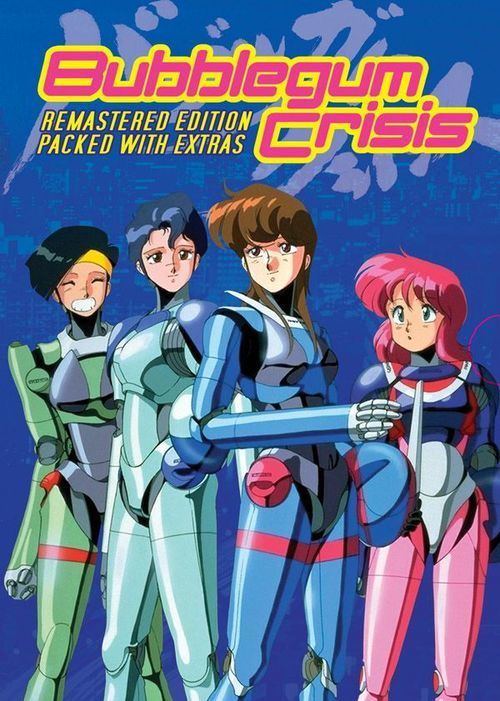 | ||||||||||||||||||||||||||||||||||
Directed by Katsuhito Akiyama(chief director)Yasunori Ide (epi. 1)Ken'ichi Yatagai (epi. 2-3)Hiroki Hayashi (epi. 4)Masami Ōbari (epi. 5-6)Fumihiko Takayama (epi. 7)Hiroaki Gōda (epi. 8) Produced by Junji FujitaToru Miura Similar Bubblegum Crisis Tokyo 20, Viper's Creed, Blue Gender, Burst Angel, Tenchi Muyo! GXP | ||||||||||||||||||||||||||||||||||
Bubblegum Crisis (Japanese: バブルガムクライシス, Hepburn: Baburugamu Kuraishisu) is a 1987 to 1991 cyberpunk original video animation (OVA) series produced by Youmex and animated by AIC and Artmic. The series was planned to run for 13 episodes, but was cut short to just 8.
Contents
- Bubblegum crisis konya wa hurricane there s a hurricane tonight
- Plot
- Setting
- Production
- Release
- Soundtracks
- Legacy
- Bubblegum Crash
- Other shows
- Crossover appearances
- RPGs
- Novel
- Comic book
- Video games
- Live action movie
- References
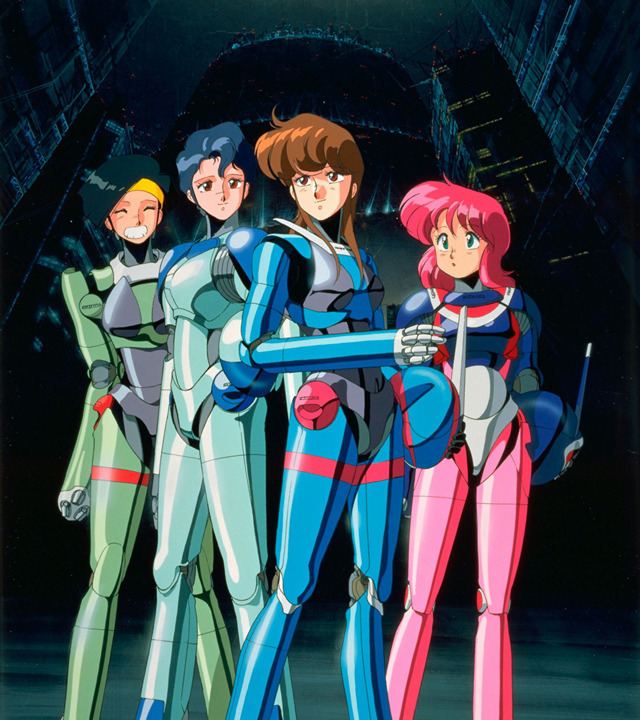
The series involves the adventures of the Knight Sabers, an all-female group of mercenaries who don powered exoskeletons and fight various problems, most frequently rogue robots. The success of the series spawned several sequel series.
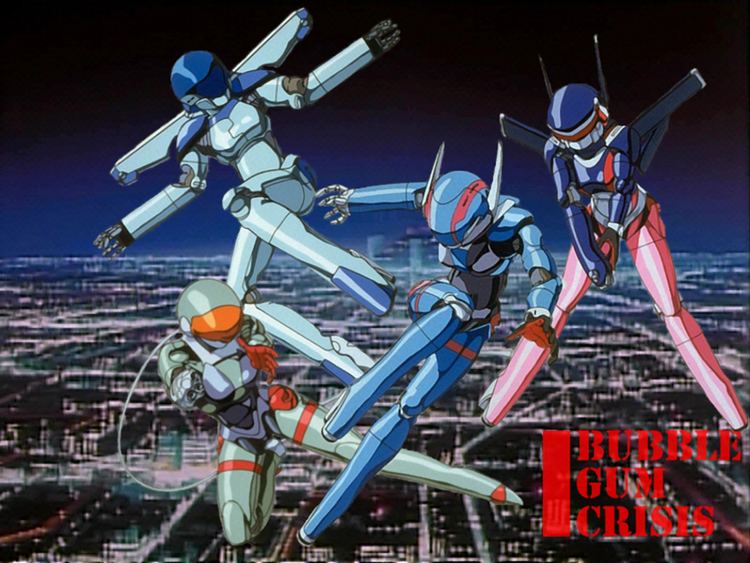
Bubblegum crisis konya wa hurricane there s a hurricane tonight
Plot
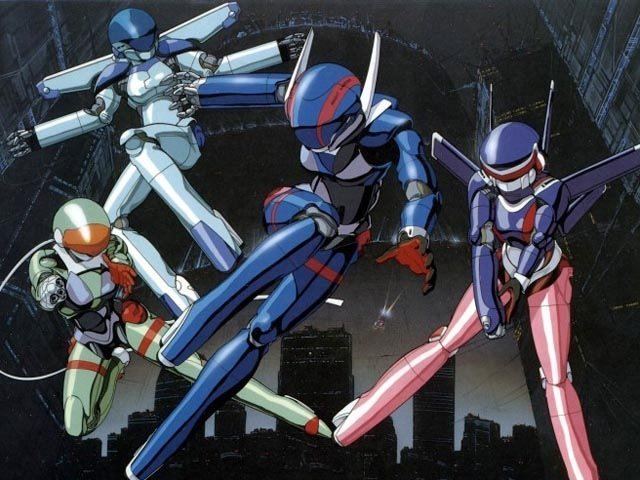
The series begins in the late 2032, seven years after the Second Great Kanto Earthquake has split Tokyo geographically and culturally in two. During the first episode, disparities in wealth are shown to be more pronounced than in previous periods in post-war Japan. The main antagonist is Genom, a megacorporation with immense power and global influence. Its main product are boomers—artificial cybernetic life forms that are usually in the form of humans with most of their body's being a machine; also known as cyberoids. While Boomers are intended to serve mankind, they become deadly instruments in the hands of ruthless individuals. The AD Police are tasked to deal with Boomer-related crimes. One of the series' themes is the inability of the department to deal with threats due to political infighting, red tape, and an insufficient budget.
Setting
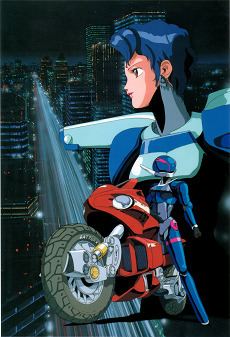
The setting displays strong influences from the movies Blade Runner and Streets of Fire. The opening sequence of episode 1 is modeled on the opening sequence of Streets of Fire. The humanoid robots known as "boomers" in the series also resemble Terminators cyborgs from the Terminator film.
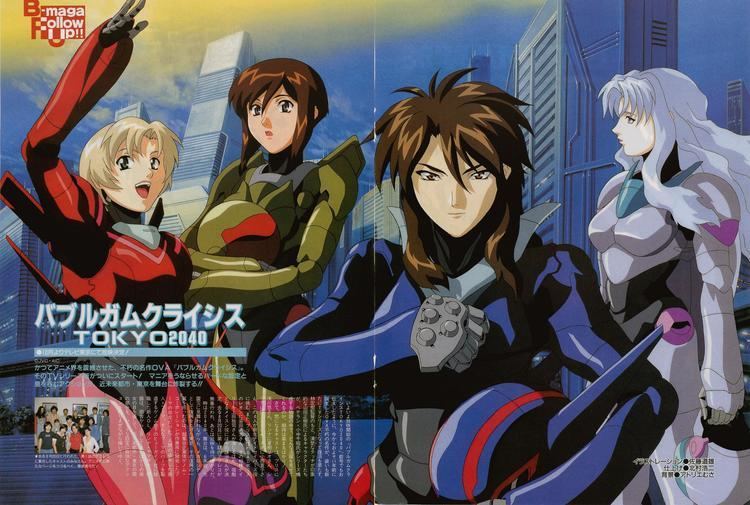
Suzuki explained in a 1993 Animerica interview the meaning behind the cryptic title: "We originally named the series 'bubblegum' to reflect a world in crisis, like a chewing-gum bubble that's about to burst."
Production
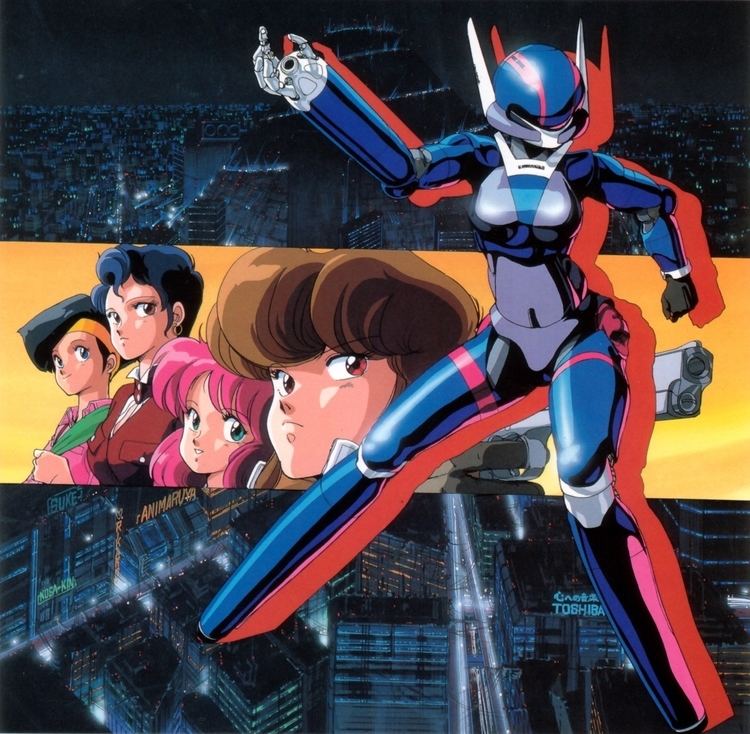
The series started with Toshimichi Suzuki intention to remake the 1982 film Techno Police 21C. However, he met Junji Fujita and the two discussed ideas, and decided to collaborate on what later became Bubblegum Crisis. Kenichi Sonoda acted as character designer, and designed the four female leads. Masami Obari created the mechanical designs. Obari would also go on to direct episode 5 and 6.
The OVA series is eight episodes long but was originally slated to run for 13 episodes. Due to legal problems between Artmic and Youmex, who jointly held the rights to the series, the series was discontinued prematurely.
Release
In North America, AnimEigo first released Bubblegum Crisis to VHS and Laserdisc in 1991 in Japanese with English subtitles. The series is notable in that it was one of the few early anime series that were brought over from Japan unedited and subtitled in English. While anime has become much more popular in the years since, in 1991, it was still mostly unknown as a storytelling medium in North America. Bubblegum Crisis was aired in the US when it first aired on PBS' San Jose affiliate KTEH in the 1990s, and STARZ!'s Action Channel in 2000.
An English dub of the series was produced beginning in 1994 by AnimEigo through Southwynde Studios in Wilmington, NC, and released to VHS and Laserdisc beginning that year. A digitally-remastered compilation, featuring bilingual audio tracks and production extras, was released on DVD in 2004 by AnimEigo. The company later successfully crowdfunded a collector's edition Blu-ray release through Kickstarter in November 2013.
Soundtracks
There are 8 soundtrack releases (one per OVA), as well as numerous "vocal" albums which feature songs "inspired by" the series as well as many drawn directly from it.
Legacy
Masaki Kajishima and Hiroki Hayashi, who both worked on the Bubblegum Crisis OAVs, cite the show as being the inspiration for their harem series Tenchi Muyo! Ryo-Ohki. In an interview with AIC, Hayashi described Bubblegum Crisis as "a pretty gloomy anime. Serious fighting, complicated human relationships, and dark Mega Tokyo." They thought it would be fun to create some comedy episodes with ideas like the girls going to the hot springs, but it was rejected by the sponsors. He also said that there was a trend to have a bunch of characters of one gender and a single one of the other gender, and asked what if Mackey (Sylia's brother) was a main character, reversing the Bubblegum scenario. This idea then became the basis for Tenchi. Hayashi said that Mackey is "sort of" the original model for Tenchi.
Kevin Siembieda's becoming aware of "Boomers" being already in use in this caused him to changed his planned name for the Rifts RPG which he had named after the |Boom Gun"-wielding power armor which was also renamed to Glitter Boy.
Bubblegum Crash
The success of the series spawned several sequel series. The first of them was the three-part OVA Bubblegum Crash (バブルガムクラッシュ!, Baburugamu Kurasshu!). After the split between Artmic and Youmex, Artmic proceeded to make a sequel on their own, Bubblegum Crash, which ran three OVA episodes and is conjectured that it was a shortened version of how Crisis was to end. Youmex promptly sued Artmic, cutting Crash short and tying the entire franchise up in legal issues for the next several years.
It is set in 2034, and the Knight Sabers seem to be finished; each of its members - except Nene - have seemingly drifted off to pursue their own goals. But at the same time, parts of a unique artificial intelligence are stolen by several villains acting under the orders of a mysterious voice. Unexpectedly, Sylia resurfaces and prepares her teammates for battle. And as a gigantic machine drills its way to Mega Tokyo's main nuclear power plant, they meet again with an old and deadly enemy.
Other shows
Crossover appearances
In 1993, it appeared on Scramble Wars, a crossover event between Bubblegum Crisis, Gall Force, Genesis Survivor Gaiarth, AD Police and Riding Bean.
RPGs
Novel
Comic book
In Japan, a number of comic books were produced that featured characters and storylines based in the same universe. Some were very much thematically linked to the OVA series, while others were "one-shots" or comedy features. A number of artists participated in the creation of these comics, including Kenichi Sonoda, who had produced the original Knight Saber character designs. A North American comic based in the Bubblegum Crisis Universe was published in English by Dark Horse Comics.
Video games
Live-action movie
In May 2009 it was announced that a live-action movie of "Bubblegum Crisis" was in the early stages of production. A production agreement was signed at the 2009 Cannes Film Festival. The film was expected to be released in late 2012 with a budget of 30 million. The production staff was said to have consulted with the original anime's staff members, Shinji Aramaki and Kenichi Sonoda, to help maintain consistency with the world of the original. However, no further developments have been announced.
